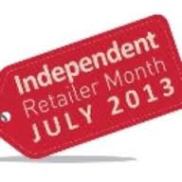I thought I’d start this weeks blog with a few stats from the UK, Australia and Ireland. The reason being there’s a similar trend across the three countries and given their maturity when compared to emerging markets the mind boggles at the opportunities still out there. So here goes.
Did you know that there are 5 million private sector businesses in the UK. Of these 5 million 99.9% are classed as SME’s. Of these, Small businesses (0 to 49 employees) account for 47% of employment and 34% of private sector turnover. Now the important stats, over 33.3% of these businesses have no web site, only 41% have a social media account and possibly most importantly only 33% have a website with the functionality for customers to purchase products or services online.
The Australian experience is similar. Australian Bureau of Statistics show that only 43% of businesses have a website but more importantly when looking at small businesses it seems the figure is also around 33%.
Guess what in Ireland it’s not that different with 32% of SME’s not having a website. Less than 23% sell electronically and only half of them purchasing online.
Three similar stories across three different markets of differing sizes and degrees of maturity. But all three territories continue to experience eCommerce growth. This is happening while high street revenues continue to struggle. So the question then must be if the small business sector, and the area we are interested in the Independent Retail Sector, has failed to take advantage of the new technology and resulting revenue streams then who’s getting the benefits? The answer is the likes of ASOS and Amazon and the multi-channel retailers such as Next and Debenhams etc. It is no coincidence that the growth of the large multi-channel retailers such as Argos and the giant online operators such as Amazon etc has happened at the expense high street.
But surely the glass is half full as opposed to half empty. With the low level of adoption of eCommerce by the small business sector then surely there is as yet untapped growth potential. The forecast for eCommerce is continued growth so if you have not yet gotten to grips with eCommerce the good news is it’s not to late. Bite the bullet and dive in as you know we believe there’s strength in numbers. And 99.9% is a pretty big number (I think). At the risk of sounding like a broken record, (for those of a younger persuasion try broken cassette or broken CD or damaged iPod or interrupted download. Should cover everyone), it’s time for independent retailers to shout about how great they are. But in 2013 that means shouting via your shop floor, shop window, local press, social media and as more of your customers are shopping from their sofas at 7pm on a Sunday evening most importantly your eCommerce enabled website.
Remember it’s not where you start but where you finish so get online and get in the race.
Next week I’ll be looking at the changing consumer habits and the opportunities that exist for the high street.
Until next week, thanks for reading.
Did you know that there are 5 million private sector businesses in the UK. Of these 5 million 99.9% are classed as SME’s. Of these, Small businesses (0 to 49 employees) account for 47% of employment and 34% of private sector turnover. Now the important stats, over 33.3% of these businesses have no web site, only 41% have a social media account and possibly most importantly only 33% have a website with the functionality for customers to purchase products or services online.
The Australian experience is similar. Australian Bureau of Statistics show that only 43% of businesses have a website but more importantly when looking at small businesses it seems the figure is also around 33%.
Guess what in Ireland it’s not that different with 32% of SME’s not having a website. Less than 23% sell electronically and only half of them purchasing online.
Three similar stories across three different markets of differing sizes and degrees of maturity. But all three territories continue to experience eCommerce growth. This is happening while high street revenues continue to struggle. So the question then must be if the small business sector, and the area we are interested in the Independent Retail Sector, has failed to take advantage of the new technology and resulting revenue streams then who’s getting the benefits? The answer is the likes of ASOS and Amazon and the multi-channel retailers such as Next and Debenhams etc. It is no coincidence that the growth of the large multi-channel retailers such as Argos and the giant online operators such as Amazon etc has happened at the expense high street.
But surely the glass is half full as opposed to half empty. With the low level of adoption of eCommerce by the small business sector then surely there is as yet untapped growth potential. The forecast for eCommerce is continued growth so if you have not yet gotten to grips with eCommerce the good news is it’s not to late. Bite the bullet and dive in as you know we believe there’s strength in numbers. And 99.9% is a pretty big number (I think). At the risk of sounding like a broken record, (for those of a younger persuasion try broken cassette or broken CD or damaged iPod or interrupted download. Should cover everyone), it’s time for independent retailers to shout about how great they are. But in 2013 that means shouting via your shop floor, shop window, local press, social media and as more of your customers are shopping from their sofas at 7pm on a Sunday evening most importantly your eCommerce enabled website.
Remember it’s not where you start but where you finish so get online and get in the race.
Next week I’ll be looking at the changing consumer habits and the opportunities that exist for the high street.
Until next week, thanks for reading.

